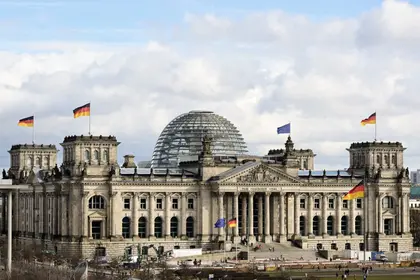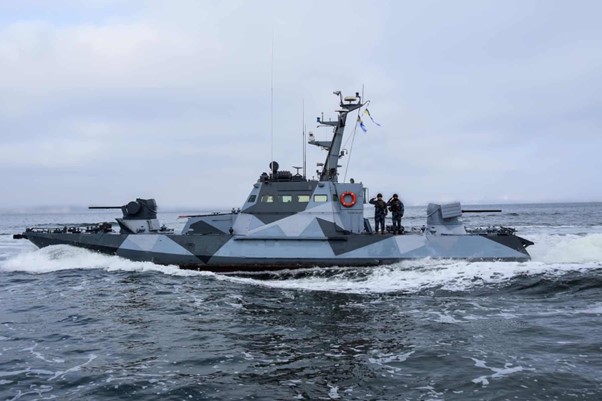Since 2022, their stark and confronting images have filled our feeds. Through the lenses and cameras of their profession, the world has seen the often-horrific impact – destroyed schools and hospitals, devastated settlements, and disfigured bodies – of Russia’s full-scale war on Ukraine.
But who they actually are and what they themselves have experienced in documenting the 21st century’s largest war is generally unseen and unheard.
JOIN US ON TELEGRAM
Follow our coverage of the war on the @Kyivpost_official.
They are the phantom photographers of the war against Ukraine.
Lisa Bukreyeva, 31, is a leading member of this group of elective eyewitnesses to conflict and its consequences. Her haunting photographs are eerie and spare, an effect which often underscores the pain and the loneliness of war’s victims.

A professional photographer since 2019, Bukreyeva spoke with Kyiv Post between assignments to Ukraine’s combat zones, where she has been working for the last 32 months. She admits that the war has changed her.
“The war called into question my entire value system and turned it upside down,” Bukreyeva said. “At the beginning of the full-scale invasion, we all changed. I now look at everything with different eyes: my favorite movies, music, books… Everything has a different meaning.”

US Freeze on Aid Puts Ukrainian Lives at Risk – Human Rights Watch

For Bukreyeva, who loved to practice street photography in her native Kyiv before February 2022, war photography has a meaning that extends beyond reporting and documentation.
“At some point, I realized that sometimes my presence [in a war zone] is more important than the photos themselves,” she said. “In the frontline territories, there is a very simple rule: whoever has paid attention is already a friend.”

“A local man in the Donetsk region asked me why I was filming there. I explained and then he said: ‘Who needs us anyway?’ I replied: ‘Well, I’m here.’ Now, I know for a fact that sometimes photography is the last thing about photography,” Bukreyeva said.
Not a single war has ever ended from indifference.
Bukreyeva’s position of empathy for her subject is at the core of her work, but comes with its own unease.
“I would like to believe that I manage to show something unknown at first glance, such as the peculiarities of the everyday life of people in the frontline territories,” she said. “It’s about how the war changes everything around it, captures all spheres of life, including how the children here have lost their childish gaze. The worst thing is that it becomes something familiar and commonplace. It becomes our home, in us, in the way we look, in our language, and in our perception of the world.”

“The only thing that matters is what you have now because, in the conditions of war, there is no confidence in tomorrow. When everything is uncertain, it remains only to do the best with what is available right now,” Bukreyeva said.
When challenged with the view of some that war photographers are “pornographers of pain,” or that the profession is about a voyeurism into the dark side for professional gain Bukreyeva responds:
“Let’s only blame the people who created the pain… A war photographer looks at this pain, sometimes risking their health and life, so that others can see it… Not a single war has ever ended from indifference,” Bukreyeva said.
Andriy Sopin, 36, is another photographer who spoke with Kyiv Post. In his case, it was directly from the front line. In recent weeks, Sopin has been documenting the evacuation of elderly residents around Pokrovsk, which is currently under immense pressure from attacking Russian forces. He has previously photographed other evacuations in Maryinka and Kherson.

The danger and distress that Sopin is voluntarily chronicling every day for the NGO ChildrenNewGeneration is in sharp contrast to his previous photography. He was a wedding photographer for 10 years, capturing some of the most joyous events of life.
Sopin is from Sviatohirsk, in the northern Donetsk region, which was occupied in 2022. He was himself evacuated at the start of the full-scale war. He personally and professionally copes by “valuing the live moment.”

“I try to convey through photography all the pain experienced by people who are in the frontline cities, the unimaginable reality in which they have to live, the distress of leaving their native homes, saving their lives, their children and relatives from the war,” Sopin said.
In speaking with Kyiv Post, neither Bukreyeva nor Sopin mention the danger of their work or acknowledge any regard for their own safety. It unknown how many photographers have died or been injured during the full-scale war, but there are high-profile cases which are a constant reminder of the risks of capturing conflict images. That includes Maksym Levin, who was one of hundreds of people executed by Russian forces in and around Bucha, an outer suburb of Kyiv and the site of extensive war crimes in 2022.

One of the most acclaimed war photographers in the world is Daniel Berehulak, an Australian of Ukrainian descent from Perth, Western Australia, who is part of the renowned Magnum collective. For the New York Times, the highly awarded Berehulak photographed and documented Russian war crimes in Bucha, where Levin was murdered.
“I hope our work stands as a testament and witness to the victims and their families,” Berehulak recently told CNN.
You can also highlight the text and press Ctrl + Enter











